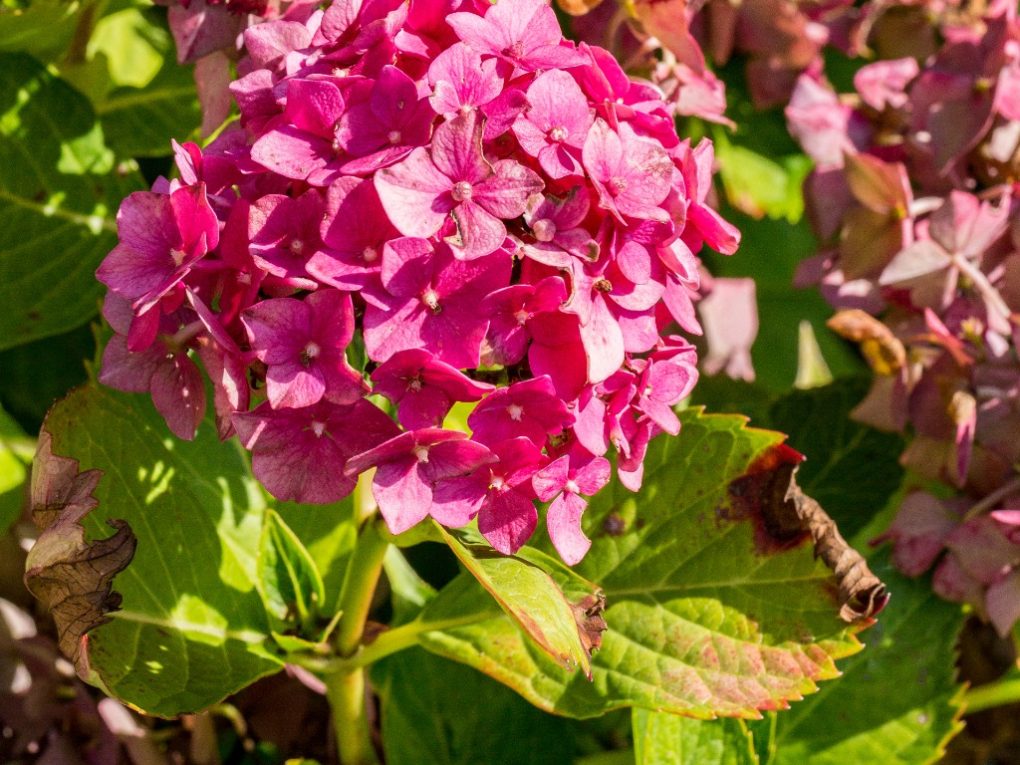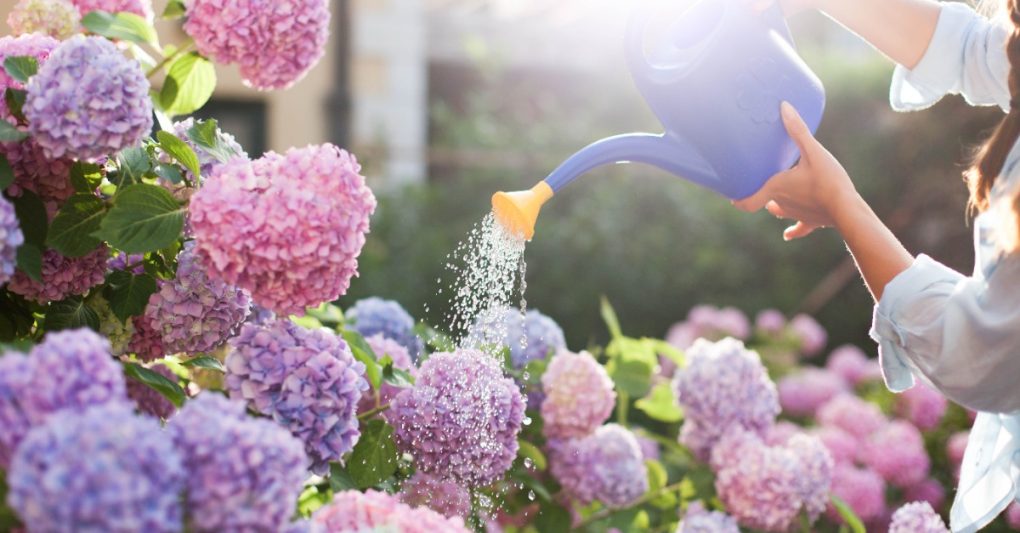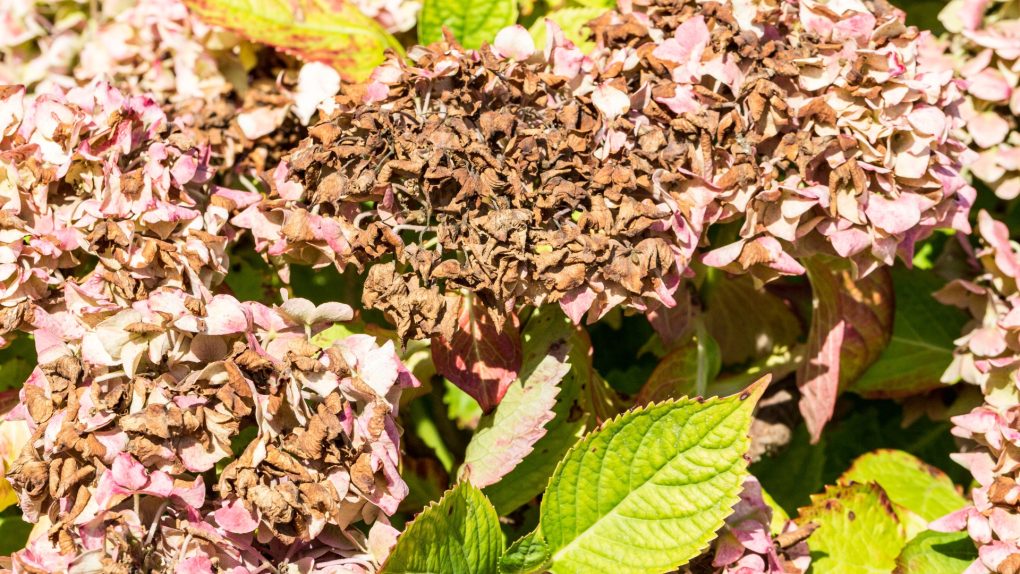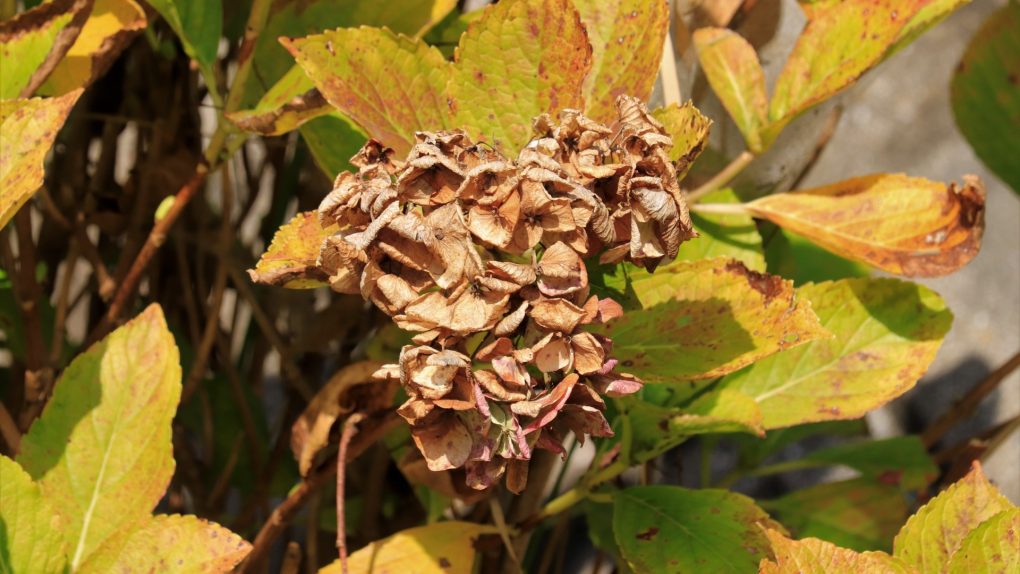Why Are My Hydrangea Leaves Turning Brown? Common Causes and Solutions
Hydrangea leaves can turn brown for several reasons, with the most common causes being overexposure to sunlight, insufficient water, leaf scorch, or a fungal infection. If your hydrangea plant is exposed to harsh sunlight, especially during midday, it can cause the delicate leaves to burn and turn brown. Inadequate water supply, particularly during hot weather, can also lead to a similar situation, causing the leaves to dry and appear brownish.

Observe the location, sun exposure, and water conditions to determine the specific issue and prevent your hydrangea leaves from turning brown. First, ensure that the plant receives dappled sunlight (not direct, harsh light) and sufficient water without overwatering. Should the problem persist, inspect the leaves for signs of a fungal infection, such as spots or mildew. Then, if a fungal infection is identified, apply a fungicide, remove and discard affected leaves, and avoid wetting foliage during watering.
Table of Contents
Environmental Factors
Environmental factors can play a significant role in the browning of hydrangea leaves. Here are some of the main factors to consider:
Watering
Hydrangeas require consistent moisture to thrive. Underwatering can cause brown and wilted leaves while overwatering can lead to root rot. Therefore, finding the right balance and keeping the soil consistently moist without letting it become waterlogged is essential.
Sunlight
Hydrangeas prefer partial shade, with some direct sunlight in the morning or evening. Too much direct sunlight can cause the leaves to turn brown and dry out. On the other hand, too little sunlight can lead to weak growth and poor flowering.

Temperature
Hydrangeas are sensitive to temperature changes, particularly during extreme heat or cold. A high temperature can dry out the leaves and cause them to brown, while frost and freezing temperatures can damage the plant and cause the leaves to wilt and brown.
Humidity
Hydrangeas prefer a humid environment, but excessive humidity can lead to fungal growth and disease. Therefore, it’s essential to maintain moderate humidity levels and ensure proper air circulation around the plant to prevent moisture buildup.
Pests and Diseases
Hydrangeas are susceptible to several pests and diseases that can cause the leaves to turn brown. Identifying the problem is crucial in treating it effectively. Here are some common pests and diseases that affect hydrangeas:
Fungal Diseases
Fungal diseases are a common problem for hydrangeas. They can cause the leaves to turn brown, wilt, and fall off. Some common fungal diseases that affect hydrangeas include:
- Leaf Spot: A fungal disease can be identified by light brown spots having a darker brown border. The spots will increase in size as the disease progresses, causing the leaves to turn yellow and ultimately fall off.
- Powdery Mildew: This fungal disease appears as a white powdery substance on leaves and stems. It can cause browning and curling of the leaves.
Bacterial Diseases
Bacterial diseases can also cause the leaves of hydrangeas to turn brown. They can cause wilting, yellowing, and brown spots on the leaves. Some common bacterial diseases that affect hydrangeas include:
- Bacterial Wilt: This disease is caused by a bacterium that enters the plant through wounds or natural openings, and can cause the leaves to turn brown and wilt.
- Bacterial Leaf Spot: This disease presents as brown spots on the leaves, and may have a yellow halo around them.
Insect Infestations
Several insects can infest hydrangeas and cause the leaves to turn brown. Some common insect infestations that affect hydrangeas include:
- Aphids: Small, soft-bodied insects that feed on plant sap. They can cause leaves to turn brown and curl.
- Japanese Beetles: Japanese beetles are a common pest for hydrangeas, causing their leaves to turn brown and skeletonize.
- Spider mites: Spider mites can infest hydrangeas and cause the leaves to turn brown and drop off.

Nutrient Deficiencies
Hydrangeas require a variety of nutrients to grow and thrive. A lack of certain nutrients can cause the leaves to turn brown and wilt. Here are some common nutrient deficiencies that may be causing your hydrangea leaves to turn brown:
Iron Deficiency
Iron deficiency is a common problem for hydrangeas, especially those growing in alkaline soil. Iron becomes less available to the plant when the soil pH is too high, leading to yellowing and browning of the leaves.
You can apply chelated iron to the soil or use iron sulfate to fix an iron deficiency. It’s important to follow the instructions on the package carefully, as too much iron can be toxic to the plant.
Magnesium Deficiency
Plants require magnesium to grow and to produce chlorophyll. Lack of magnesium can cause leaves to yellow and brown.
If your soil has a magnesium deficiency, you can use Epsom salt to fix the problem. Mix a tablespoon with a gallon of water and apply it around the base of your plant. Repeat every 2-4 weeks.
Phosphorus Deficiency
Phosphorus is important for root development and flower production. A lack of phosphorus can cause stunted growth, poor flowering, and brown spots on the leaves.
You can apply bone meal or rock phosphate to the soil to fix a phosphorus deficiency. Follow the instructions on the package carefully, as too much phosphorus can harm the plant.
Pruning and Maintenance
Proper pruning and maintenance can help prevent hydrangea leaves from turning brown. Here are some sub-sections to consider:
Improper Pruning
Plants can suffer stress from improper pruning, which can lead to browning leaves. If you prune hydrangeas at the right time and in the right way, you will get a healthier plant. It is best to prune in early spring or late winter before new growth emerges. Cut back the stems to just above the first pair of healthy buds. If you prune in the fall or winter, you will remove buds that will produce flowers in the spring.
Overfertilization
Overfertilizing can cause brown leaves on hydrangeas. Too much fertilizer can lead to a buildup of salts in the soil, which can damage the roots and cause leaf burn. Use a slow-release fertilizer in the spring, and avoid fertilizing in the fall. If you suspect overfertilization is the cause of brown leaves, flush the soil with water to remove excess salts.

Chemical Burn
Chemical burn can occur when herbicides or pesticides are applied near hydrangeas. The chemicals can drift onto the leaves and cause them to turn brown. To prevent chemical burn, avoid applying chemicals near hydrangeas on windy days. If you suspect chemical burn is the cause of brown leaves, flush the soil with water to remove any residual chemicals.
